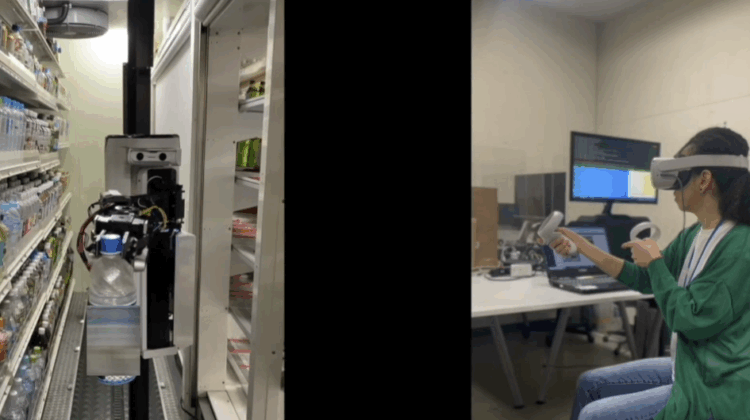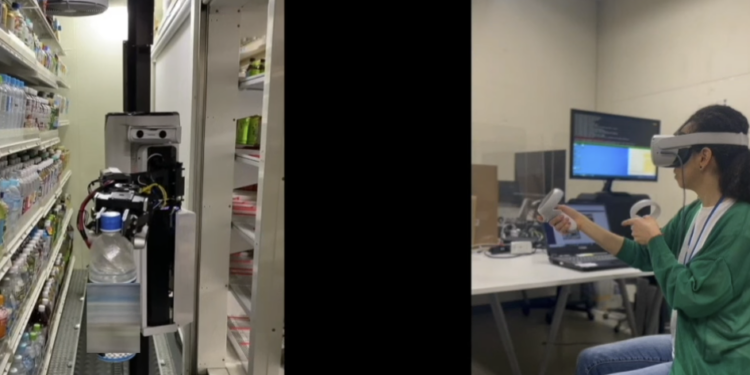
Most immigration labor is low-skilled labor. In short, it’s a net loss for American taxpayers who end up subsidizing health care, education and social services so companies can have cheaper labor. All the discourse about how much it would cost to pick tomatoes or stock shelves at Walmart misses the fact that we’re paying ten times over for it in local, state and federal taxes.
I’m not proposing this as the solution to anything, but it’s interesting food for thought.
Inside a multistory office building in Manila’s financial district, around 60 young men and women monitored and controlled artificial intelligence robots restocking convenience store shelves in distant Japan.
The AI robots are designed by Tokyo-based startup Telexistence, and run on Nvidia and Microsoft platforms. Since 2022, the company has deployed the machines in the back rooms of over 300 FamilyMart and Lawson stores in Tokyo. It is also planning to use them soon in 7-Elevens.
Japan tried opening itself up to immigration with the usual catastrophic results. It’s not as bad as Europe, but bad enough that quite a few Japanese voters want to hit the brakes.
On the other hand, Japan has a fatally terrible birth rate trajectory, but it also loves robots. However getting robots to perform quite a few tasks works better on TV than in real life. AI may fix that, but not just yet.
So Japan has gone for a kind of ‘Mechanical Turk’ solution.
The Mechanical Turk was a supposed chess playing machine that went up against Napoleon and Benjamin Franklin. But there was no actual automation. Behind the hoax was a clever way of letting a person control the game. Japan’s mechanical turk solution lets it use remote cheap labor and robots without immigration.
It’s an interesting approach.















